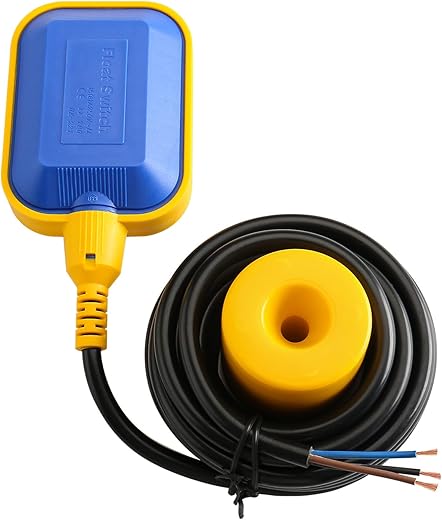







Understanding Float Switches: The Unsung Heroes of Fluid Management
Float switches are not the most glamorous components in the world of technology, yet their importance is undeniable. If you’ve ever wondered how water tanks, sump pumps, or aquariums maintain optimal fluid levels, the answer often lies in these small but mighty devices. In this article, we will delve into what float switches are, how they work, their various types, applications, and why they are indispensable in modern fluid management systems.
What is a Float Switch?
A float switch is a device that detects the level of liquid within a tank or reservoir and activates or deactivates a pump, valve, or other equipment based on that level. Think of it as a lifeguard for your fluids, ensuring that levels stay within safe parameters. When the liquid rises to a predetermined level, the float switch signals the equipment to respond accordingly—either by turning on a pump to drain excess fluid or shutting a valve to prevent overflow.
How Do Float Switches Work?
To understand how float switches function, let’s break it down into a simple analogy. Imagine a buoy in a sea; as the water level rises and falls, the buoy moves with it. In the same way, float switches use a buoyant object (the float) that moves up and down with the liquid level.
When the float reaches a specific level, it activates an internal mechanism—often a switch—that can either complete or break an electrical circuit. The design and technology can vary; some float switches use mechanical contacts, while others are magnetic or capacitive. Regardless of the method, the principle remains the same: to sense when something is too high or too low and act accordingly.
Types of Float Switches
There are several types of float switches, each designed for specific applications. Here are the most common:
1. Mechanical Float Switches
These are the traditional float switches that use a simple mechanical arm and a pivot point. When the float rises, it tilts the arm, closing or opening a switch. They are reliable and straightforward but can wear out over time.
2. Magnetic Float Switches
Rather than relying on a mechanical mechanism, magnetic float switches use magnets to open or close the circuit. When the float moves, it either brings two magnets together or separates them, triggering the switch. This type is often more durable and less prone to wear.
3. Capacitive Float Switches
These switches measure the change in capacitance as the liquid level changes. They are not affected by the density of the liquid, making them suitable for various substances, including viscous fluids. However, they can be more expensive and complex to install.
Applications of Float Switches
Float switches have a wide range of applications across various industries. Here are a few notable examples:
1. Water Tanks
In residential and commercial settings, float switches help manage water levels in tanks, ensuring a consistent supply without overflow or dry running of pumps.
2. Sump Pumps
In basements prone to flooding, float switches activate sump pumps when water levels rise, preventing property damage and maintaining a safe environment.
3. Aquariums
Aquarium enthusiasts utilize float switches to maintain stable water levels, ensuring that fish and aquatic plants thrive in a balanced ecosystem.
4. Wastewater Treatment
In wastewater facilities, float switches play a critical role in monitoring levels in tanks and activating pumps to manage waste efficiently.
5. Industrial Processes
Many manufacturing processes rely on float switches to regulate fluid levels in tanks and containers, ensuring smooth and safe operations.
Why Float Switches Matter
You might wonder, “Are float switches really that important?” The answer is a resounding yes! Without float switches, systems designed to manage fluid levels would be prone to failures, leading to costly repairs and potential hazards. They provide an automated solution to what could otherwise be a labor-intensive and error-prone task. Moreover, they contribute to energy efficiency by preventing pumps from running unnecessarily, saving both time and money.
Conclusion
In a world where technology drives efficiency and safety, float switches quietly perform their vital roles, ensuring that fluid levels remain stable and manageable. Whether in your home, industry, or aquariums, understanding the importance and functionality of float switches can empower you to make informed decisions about your fluid management systems.
Next time you fill up your water tank or check your basement sump pump, remember the little float switch working diligently behind the scenes—an unsung hero in fluid management.
FAQs
1. How do I choose the right float switch for my application?
Choosing the right float switch depends on several factors, including the type of liquid, the required switching capacity, and the installation environment. Consider whether you need a mechanical, magnetic, or capacitive switch based on your specific needs.
2. Can float switches fail, and if so, how can I prevent this?
Yes, float switches can fail due to wear, corrosion, or mechanical issues. Regular maintenance, including cleaning and inspections, can help prevent failures. Opting for high-quality materials and reliable brands also increases longevity.
3. Are float switches difficult to install?
Most float switches are designed for easy installation. However, the complexity can vary based on the type and application. Always refer to the manufacturer’s instructions and consider consulting an expert if you are unsure.
